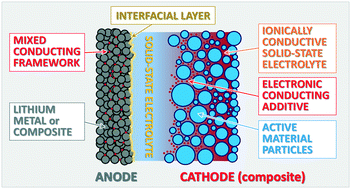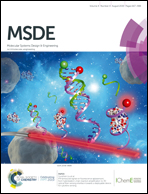Managing transport properties in composite electrodes/electrolytes for all-solid-state lithium-based batteries†
Abstract
In the global competition for ultimate electrochemical energy storage systems, the increasing tendency of original equipment manufacturers (OEM) worldwide is to consider solid-state technology as a solution to replace the current Li-ion batteries operating with liquid electrolytes. The reason for this is the need of enhanced energy density batteries which are also durable and inherently safe. Proper understanding of the electrode/electrolyte interface is of paramount importance for this purpose. Indeed, all-solid-state lithium-based secondary batteries require efficient ion conductive pathways through the whole thickness of the electrode to properly access all the active material particles, thus providing full electrode capacity. In this respect, here, we propose an overview of the strategies adopted to achieve this goal, including polymeric and inorganic ion conductors and composites thereof as well as their preparation procedures and characterisation techniques, which currently represent highly important topics in the academic/industrial community to provide solutions for the shortcomings of poor safety, low ion mobility and short cycle life.

- This article is part of the themed collection: Charge Transporting Nanostructured Polymers for Electrochemical Systems


 Please wait while we load your content...
Please wait while we load your content...